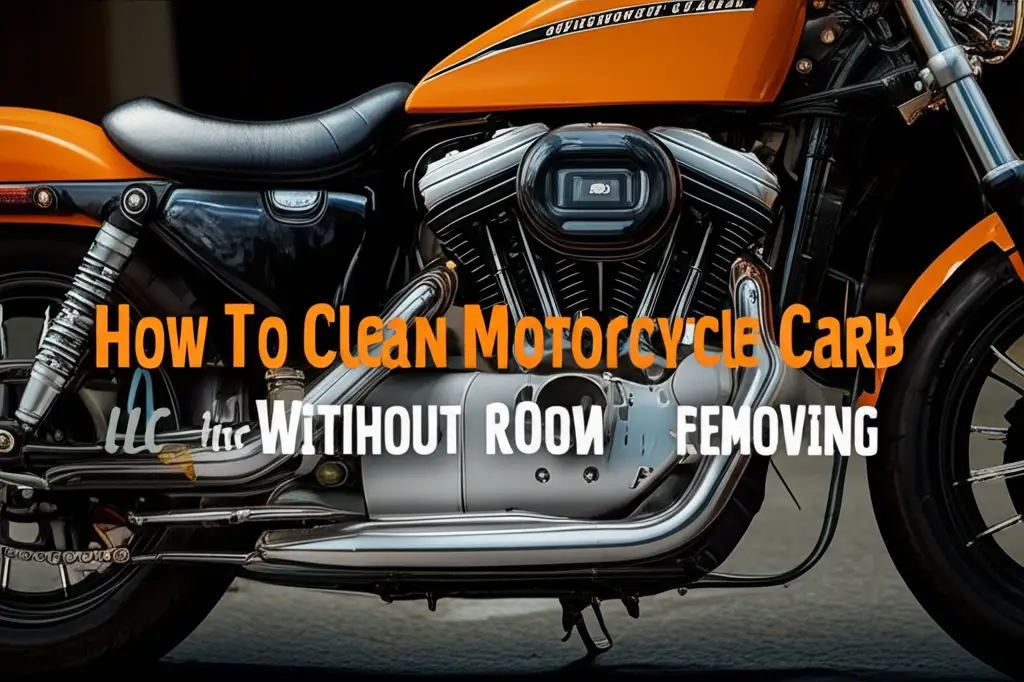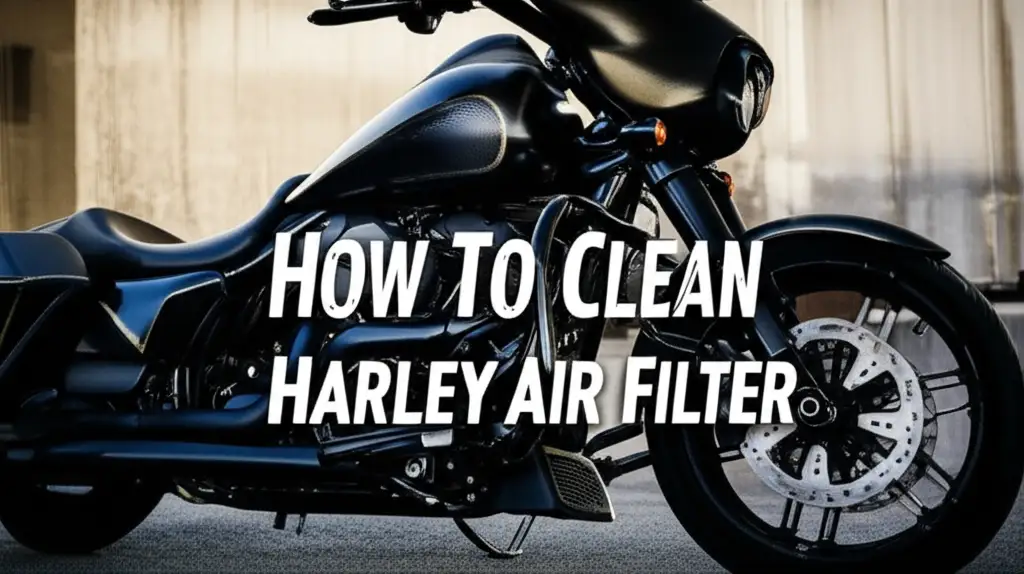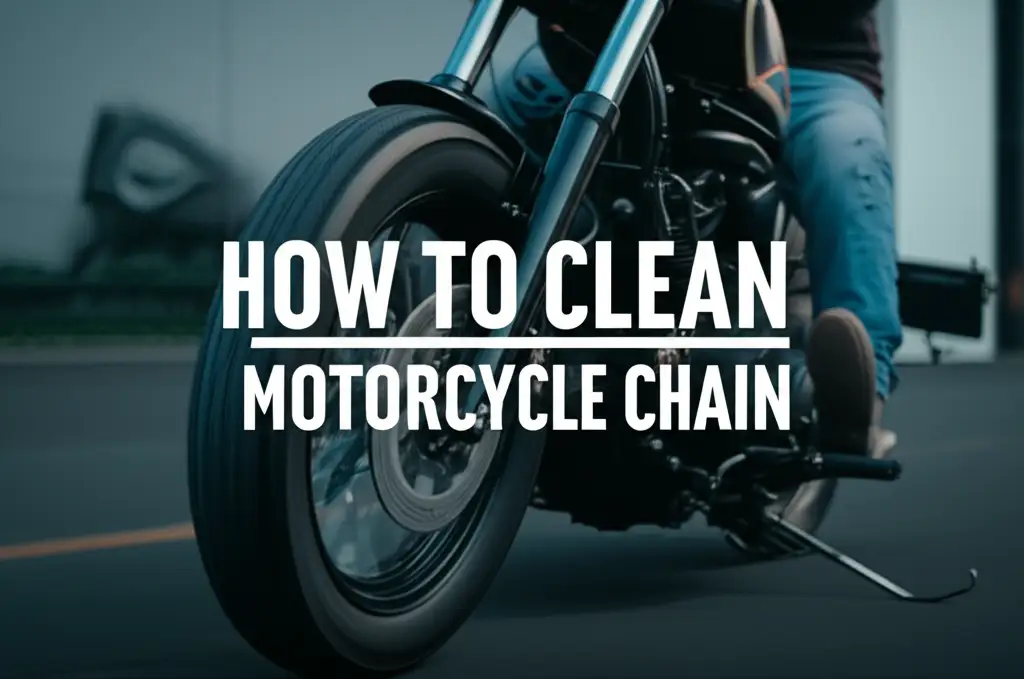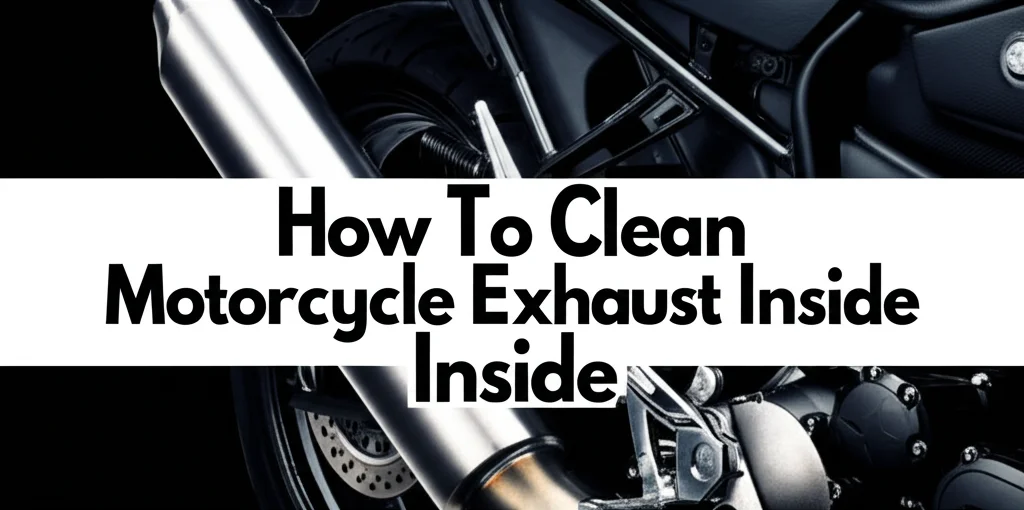· Motorcycle Maintenance · 20 min read
How To Clean Air Filter Motorcycle
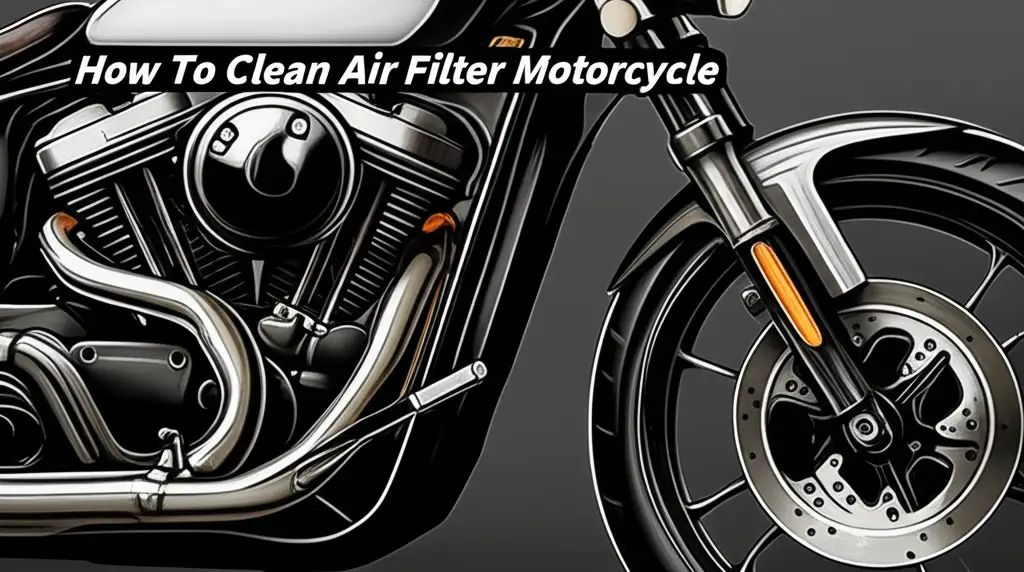
Clean Your Motorcycle Air Filter: A Simple Guide
Has your motorcycle felt a bit sluggish lately? Is its fuel economy dropping? A dirty air filter might be the issue. Your motorcycle engine needs clean air to perform its best. A clean filter allows your engine to breathe freely. It also stops harmful dirt from entering the engine.
Learning how to clean air filter motorcycle is an important skill for any rider. This simple task can greatly improve your bike’s power and lifespan. It also saves you money on replacements. In this guide, I will show you how to clean your motorcycle’s air filter step by step. We will cover different filter types and common mistakes. You will learn everything needed to keep your ride running smoothly.
Takeaway:
- Regularly cleaning your motorcycle’s air filter boosts engine power and saves fuel.
- Identify your filter type (foam, paper, gauze) before cleaning.
- Always use specific cleaning solutions and oils for reusable filters.
- Inspect the filter for damage during cleaning and replace if needed.
- Proper reinstallation ensures optimal engine protection and performance.
How do I properly clean my motorcycle’s air filter?
To clean your motorcycle air filter, first remove it from the airbox. For foam filters, wash with specialized cleaner, rinse, dry, and oil. For reusable gauze filters, use a kit with cleaner and oil. Paper filters usually need replacement. Always follow the manufacturer’s instructions.
Why Cleaning Your Motorcycle Air Filter Matters
Your motorcycle’s air filter is a small but mighty part. It protects your engine from dirt and debris. Air comes into the engine through this filter. This air mixes with fuel for combustion. A clean filter lets plenty of clean air pass through. This makes your engine run well.
Think about what happens with a dirty filter. Dirt and dust build up on it. This blocks airflow. Your engine cannot get enough air. This makes it work harder. You might notice less power when you ride. Your bike might not accelerate as quickly.
A dirty filter also wastes fuel. The engine tries to make up for less air. It burns more fuel to do this. This means more stops at the gas station. Regular cleaning keeps your engine happy and efficient. It also helps your engine last longer. Small particles can get past a clogged filter. These particles can damage internal engine parts over time. Cleaning your filter protects your investment.
Enhancing Engine Performance and Longevity
Clean filters give your engine the air it needs. This results in better throttle response. Your bike will feel more lively. Fuel economy also goes up. You will save money on gas. This simple maintenance task adds years to your engine’s life. It prevents wear from dirt. Keeping your filter clean is key for great rides. It keeps your motorcycle strong.
Identifying Your Motorcycle Air Filter Type
Before you clean your motorcycle air filter, you need to know what type it is. Different filters need different cleaning methods. Using the wrong method can damage the filter. It can also hurt your engine. Most motorcycles use one of three main types: foam, paper, or gauze/cotton.
Foam Air Filters
Foam filters are common on many motorcycles. They are especially popular on dirt bikes and ATVs. These filters use layers of foam. The foam traps dirt while letting air pass. They are usually oiled. This oil helps catch small particles. Foam filters are washable and reusable. They need specific foam filter cleaner and oil. Learn more about cleaning foam air filters.
Paper Air Filters
Paper filters look like pleated paper. They are often found on street bikes and older models. These filters are usually disposable. You cannot clean them effectively. Water or chemicals can damage the paper. This creates holes. Dirt can then get into your engine. If your motorcycle has a paper filter, you must replace it when it gets dirty. Do not try to wash it.
Gauze/Cotton (Reusable) Air Filters
Gauze or cotton filters are often called “performance” filters. Brands like K&N make them. They have layers of cotton gauze. This gauze is usually pleated. It is set between wire mesh screens. These filters are also oiled. The oil traps fine dust. Gauze filters are reusable. They need a special cleaning kit. This kit includes a cleaner and specific filter oil. Many ATV filters use a similar construction. Find out how to clean your ATV’s air filter effectively.
Knowing your filter type is the first step to proper cleaning. Check your motorcycle’s manual if you are unsure. This ensures you use the correct supplies and method.
Gathering Your Tools and Supplies for Filter Cleaning
Having the right tools makes the cleaning process easy. You need different supplies for different filter types. Make sure you get everything ready before you start. This saves time and effort. Proper supplies protect your filter and your engine.
For Foam Air Filters:
- Foam Filter Cleaner: This is a special solvent. It breaks down dirt and old filter oil. Do not use gasoline or harsh degreasers. They can damage the foam.
- Foam Filter Oil: This oil is sticky. It helps the foam trap dust. Make sure it is specific for foam filters. Some come in spray form. Others are liquids you pour on.
- Gloves: Disposable latex or nitrile gloves keep your hands clean. Filter oil can be messy.
- Clean Rags or Paper Towels: For wiping excess oil and general cleanup.
- Buckets or Wash Tubs: Two large ones are good. One for cleaning solution, one for rinsing.
- Compressed Air (Optional): For clearing some stubborn dirt, but use with care. Do not use high pressure.
For Gauze/Cotton Air Filters (e.g., K&N, Spectre):
- Gauze Filter Cleaning Kit: These kits come with a special cleaning solution and filter oil. Using the right kit is very important. Generic cleaners can damage the cotton. Learn more about cleaning Spectre air filters.
- Gloves: Again, for protecting your hands from the oil and cleaner.
- Soft Brush (Optional): A very soft brush can help gently remove large debris.
- Clean Rags or Paper Towels: For wiping up any spills.
- Access to Water: For rinsing the filter thoroughly.
For All Filter Types (General Tools):
- Screwdriver or Socket Set: You will need these to remove the airbox cover. This lets you access the filter.
- Work Area: A well-ventilated area is best. Lay down old newspapers or a tarp. This protects your work surface from spills.
- Flashlight: Useful for inspecting the filter and airbox for any remaining dirt.
Gathering these items before you begin helps ensure a smooth cleaning process. It helps you avoid interruptions. This prepares you for a proper clean.
Step-by-Step Guide: Cleaning a Foam Motorcycle Air Filter
Cleaning a foam air filter is straightforward. It requires attention to detail. This process ensures your filter works perfectly. It protects your engine from harmful particles. Follow these steps for a complete and effective clean.
1. Remove the Air Filter
First, locate your motorcycle’s airbox. It is usually under the seat or side fairing. You will need tools to open the airbox cover. Remove any clips or screws holding it in place. Carefully pull the foam filter out. Note how it sits inside the airbox. This helps with reinstallation. Look at the airbox interior. If it is dirty, wipe it clean with a damp rag. This prevents new dirt from getting on your clean filter.
2. Clean the Foam Filter
Place the dirty foam filter into a wash tub or bucket. Apply the foam filter cleaner generously. Make sure the cleaner covers all parts of the foam. Gently massage the cleaner into the filter material. You want to loosen all the dirt and old oil. Squeeze the filter repeatedly to work the cleaner through. Do not twist or wring the filter. This can damage the foam. Repeat this until the filter looks clean. The dirty cleaner will turn dark.
3. Rinse the Filter
Once clean, rinse the filter thoroughly. Use clean water. You can use a hose or another bucket of water. Keep rinsing until the water runs clear. Make sure all cleaning solution is gone. Residual cleaner can affect the new oil. It can also harm your engine. Squeeze out excess water gently. Do not twist the foam.
4. Dry the Filter Completely
This step is very important. The foam filter must be completely dry before oiling. Water prevents the new oil from sticking properly. You can let it air dry. Hang it in a well-ventilated area. Avoid direct sunlight or heat sources. These can damage the foam. Drying can take several hours. Some people use a fan to speed this up. Be patient. A damp filter is a dirty filter.
5. Oil the Filter
Now it is time to oil the filter. Apply fresh foam filter oil evenly. You can pour liquid oil into a bag with the filter. Then, massage the oil throughout the foam. If using a spray oil, coat all surfaces. Ensure the foam is fully saturated. It should look evenly colored and slightly sticky. Squeeze out any excess oil. The filter should be moist, not dripping. Too much oil can restrict airflow. This can hurt engine performance.
6. Reinstall the Filter
Carefully place the newly oiled filter back into the airbox. Make sure it seats correctly. It should fit snugly. Check for any gaps. Gaps allow unfiltered air to bypass the filter. This can let dirt into your engine. Close the airbox cover securely. Reattach all screws or clips. You are now ready to ride with a clean filter!
Step-by-Step Guide: Cleaning a Gauze/Cotton Air Filter
Cleaning a gauze or cotton air filter requires a specific approach. These filters are reusable and durable. But they need the right products. This process keeps them performing at their best. It helps your motorcycle engine breathe freely.
1. Remove the Air Filter
Begin by finding your motorcycle’s airbox. It is usually behind a side panel or under the fuel tank. Use the proper tools to remove the airbox cover. Take out the gauze filter. Look at how it sits in the airbox. This helps you put it back correctly. Wipe down the inside of the airbox with a clean, damp cloth. Remove any loose dirt. This stops new dirt from getting on your clean filter.
2. Apply Cleaner
Most gauze filter cleaning kits come with a special spray cleaner. Spray the cleaner generously on both sides of the filter. Make sure to cover all the pleats. Let the cleaner soak in for about 10-15 minutes. This allows the solution to break down dirt and old filter oil. Do not let the cleaner dry on the filter. If it starts to dry, apply more. Do not use harsh chemicals like gasoline or general degreasers. These can damage the delicate cotton fibers.
3. Rinse the Filter
After the cleaner has soaked, rinse the filter gently. Use low-pressure running water. Rinse from the clean side (inside) to the dirty side (outside). This pushes dirt out. Avoid high-pressure water. It can damage the filter pleats. Continue rinsing until the water runs clear from the filter. This shows all the dirt and cleaner are gone. Be thorough with your rinse.
4. Dry the Filter Completely
Drying is a critical step for gauze filters. The filter must be completely dry before you apply new oil. Water repels oil. A damp filter will not hold the oil properly. Place the filter on a clean surface or hang it. Allow it to air dry naturally. This can take several hours. Do not use compressed air, heat guns, or direct sunlight. These can warp the frame or damage the cotton. Patience ensures proper drying.
5. Oil the Filter
Once the filter is bone dry, it is time to apply new filter oil. Most kits include a spray or squeeze bottle oil. Apply the oil evenly along each pleat. You can do this from the clean side. The oil will wick through the cotton. Wait about 20 minutes for the oil to spread. Then, check for any light spots. These spots need more oil. You want a uniform color. Avoid over-oiling. Too much oil can restrict airflow. It can also foul sensors or spark plugs.
6. Reinstall the Filter
Carefully put the freshly oiled filter back into the airbox. Ensure it fits snugly. It must create a tight seal. This prevents unfiltered air from bypassing the filter. Check that all edges are seated correctly. Close the airbox cover securely. Fasten all clips or screws. Your motorcycle is now ready for the road. The clean filter will help your engine perform its best.
When to Clean Your Motorcycle Air Filter and Common Mistakes
Knowing when to clean your motorcycle air filter is as important as knowing how. Regular maintenance prevents problems. Ignoring a dirty filter can lead to bigger issues down the road. Also, avoid common mistakes to ensure a proper clean.
When to Clean Your Air Filter:
The frequency of cleaning depends on several factors:
- Riding Conditions: If you ride often in dusty, dirty, or off-road conditions, your filter will get dirty faster. You might need to clean it every few rides.
- Mileage/Hours: Check your motorcycle’s manual for recommended service intervals. This is a good starting point. Some suggest every 5,000 miles or annually for street bikes. Dirt bikes often need cleaning every 10-15 hours of riding.
- Visual Inspection: Regularly check your air filter. If it looks visibly dirty, darkened, or clogged with debris, it is time to clean it. Look for dirt embedded in the pleats or foam.
- Performance Issues: Notice if your motorcycle loses power, has poor acceleration, or uses more fuel. These are signs of a restricted air filter.
- Pre-Ride Check: For serious riders, a quick visual check before long rides or races is a good habit.
It is always better to clean it slightly early than too late. A clean filter ensures peak performance and protection.
Common Cleaning Mistakes to Avoid:
- Using the Wrong Cleaner: Never use gasoline, brake cleaner, or harsh household detergents. These can destroy foam or cotton fibers. Always use cleaners designed for your specific filter type.
- Using High-Pressure Air or Water: Blasting the filter with compressed air or a pressure washer can tear the filter material. It can create microscopic holes. These holes let dirt through. Use gentle pressure when rinsing.
- Not Drying Completely: Oiling a damp filter is a big mistake. Water prevents the oil from sticking properly. The filter will not trap dirt effectively. Always let the filter air dry completely.
- Over-Oiling or Under-Oiling:
- Over-oiling: Too much oil can restrict airflow. This reduces engine power. It can also cause problems with sensors or foul spark plugs.
- Under-oiling: Not enough oil means the filter will not trap fine dust. Dirt can enter the engine. Aim for an even coat, not dripping wet.
- Not Inspecting for Damage: Always check the filter for tears, holes, or cracks after cleaning. If you find any damage, replace the filter. A damaged filter offers no protection.
- Incorrect Reinstallation: Make sure the filter is seated properly in the airbox. Any gaps allow unfiltered air to bypass the filter. Double-check all seals and clamps.
By avoiding these mistakes, you ensure your air filter provides maximum protection. You also get the best performance from your motorcycle. Regular and correct cleaning saves you money and engine wear.
Insulating the Airbox and Inspecting Your Filter for Optimal Performance
Beyond cleaning the filter itself, properly sealing your airbox and thoroughly inspecting the filter are crucial steps. These actions ensure that your engine gets only clean, filtered air. They protect it from damaging elements.
Sealing the Airbox for Maximum Protection
The air filter is only as good as the seal around it. If your airbox is not sealed well, dirt can bypass the filter. It enters the engine directly. This defeats the purpose of cleaning.
- Check the Airbox Cover: After you put the clean filter back, make sure the airbox cover fits tightly. All clips, screws, or bolts should be secure.
- Inspect Rubber Seals/Gaskets: Many airboxes have rubber seals or gaskets. These create a tight fit around the filter and cover. Check these seals for cracks, tears, or hardening. Worn-out seals need replacement.
- Verify Filter Seating: The filter itself must sit snugly in its housing. There should be no gaps around its edges. If the filter moves around, it might not be sealing properly. Ensure it is fully seated before closing the airbox.
- Consider Grease for Foam Filters: For some foam filter setups, a thin bead of grease (like waterproof marine grease) around the filter’s sealing lip can provide an extra layer of protection. This helps prevent dust from creeping past.
Proper airbox sealing is critical. It acts as the final barrier against harmful contaminants. Overlooking this step can lead to significant engine wear. It is a small detail that makes a big difference.
Detailed Filter Inspection Post-Cleaning
After cleaning and before re-oiling (for reusable filters) or reinstalling, a careful inspection is a must. This step checks the filter’s integrity. It ensures it is ready to protect your engine.
- Look for Tears or Holes: Hold the clean, dry filter up to a light source. Look through the material. For foam filters, check for any thin spots or punctures. For gauze filters, inspect the cotton pleats for rips or worn areas. Even tiny holes can let harmful particles through.
- Check Frame Integrity: The plastic or rubber frame of the filter should be solid. Look for cracks, bends, or damage. A warped frame might prevent a good seal in the airbox.
- Examine Rubber Gaskets/Seals: If the filter has its own integrated rubber gasket, inspect it. It should be pliable and free of cracks. A hardened or damaged gasket will not seal properly against the airbox.
- Assess Overall Condition: Does the filter look healthy? Is the foam still supple? Are the gauze pleats intact? If the filter shows signs of age, brittle material, or extensive damage, it is time for a new one. Do not risk your engine with a compromised filter.
Regular inspection ensures that your efforts in cleaning are worthwhile. It confirms the filter can do its job. A damaged filter, no matter how clean, cannot protect your engine effectively. Replace it if there is any doubt. This helps maintain your motorcycle’s health and performance.
Beyond the Air Filter: Complementary Motorcycle Maintenance Tips
Cleaning your motorcycle’s air filter is a great start. But it is just one part of overall motorcycle care. Other maintenance tasks work with a clean air filter. They ensure your bike runs perfectly. A holistic approach keeps your ride reliable and fun.
Fuel System Health
A clean air filter allows good airflow. This clean air mixes with fuel. If your fuel system is dirty, your engine still suffers. Old or contaminated fuel can clog fuel lines. It can also block fuel injectors or carburetors. This causes rough idling or poor performance. Regularly check your fuel lines for leaks or cracks. Consider using a fuel system cleaner periodically. This helps remove deposits. If your motorcycle uses a carburetor, learn how to clean it without removal for better performance.
Oil and Oil Filter Changes
Engine oil lubricates moving parts. It also carries away heat and debris. A dirty oil filter cannot effectively remove these contaminants. Clean air coming in, but dirty oil circulating inside is not ideal. Change your engine oil and oil filter at recommended intervals. This ensures proper lubrication. It extends engine life. Fresh oil keeps your engine running smoothly.
Spark Plug Inspection
Spark plugs ignite the air-fuel mixture. A clean air filter provides the right air for combustion. But if spark plugs are worn or fouled, ignition suffers. Check your spark plugs regularly. Look for signs of wear or carbon buildup. Replace them if they look bad. Correctly gapped and clean spark plugs ensure efficient combustion. This directly impacts power and fuel economy.
Tire Pressure and Chain Lubrication
While not directly related to the engine’s air intake, tire pressure and chain maintenance affect overall performance. Properly inflated tires improve handling and fuel efficiency. A well-lubricated chain reduces friction. It transmits power effectively to the wheel. These simple checks contribute to a better riding experience. They also save you money on parts and fuel.
Battery and Electrical System Check
Your motorcycle’s battery powers all electrical components. This includes the ignition system. A weak battery can cause starting problems. Corroded terminals can reduce power flow. Check battery terminals for corrosion. Keep them clean and tight. Ensure the battery is fully charged. A healthy electrical system supports consistent engine operation. This complements a clean air system.
By combining air filter cleaning with these other maintenance tasks, you create a robust care plan. This approach keeps your motorcycle in top shape. It ensures safety, reliability, and peak performance on every ride. Your bike will thank you with years of trouble-free enjoyment.
FAQ Section
How often should I clean my motorcycle air filter?
The cleaning frequency depends on riding conditions. For street riding, check it every 3,000-5,000 miles or annually. If you ride in dusty, off-road conditions, clean it more often. This might be every few rides or 10-15 hours of engine use. Visual inspection is key; clean it when it looks dirty.
Can I use dish soap to clean my motorcycle air filter?
No, do not use dish soap, gasoline, or general degreasers. These products can damage the foam or cotton fibers of your filter. This creates holes and voids its protective capabilities. Always use cleaning solutions specifically designed for motorcycle foam or gauze/cotton air filters.
What happens if I don’t clean my motorcycle air filter?
If you do not clean your motorcycle air filter, it will get clogged with dirt. This restricts airflow to the engine. Your motorcycle will lose power and suffer poor acceleration. Fuel economy will drop. Worse, dirt can bypass a clogged filter and damage internal engine parts, leading to costly repairs.
How do I know if my air filter is foam, paper, or gauze?
Foam filters feel like dense sponge and are often brightly colored (e.g., blue, red). Paper filters are white or off-white, with distinct pleats, and feel stiff. Gauze/cotton filters (like K&N) are red or gray, also pleated, but feel soft and oily to the touch, with a wire mesh frame.
Should I oil my motorcycle air filter after cleaning?
Yes, if your filter is foam or gauze/cotton (reusable type). These filters rely on a special sticky oil to trap fine dust particles. Always use the specific filter oil designed for your filter type. Paper filters are not oiled and are meant to be replaced when dirty.
Can a dirty air filter affect my motorcycle’s fuel economy?
Yes, a dirty air filter can significantly affect your motorcycle’s fuel economy. When the air filter is clogged, your engine struggles to get enough air. To compensate, the fuel system may deliver more fuel than needed. This results in an overly rich mixture and decreased miles per gallon.
Conclusion
Cleaning your motorcycle’s air filter is a simple task with big rewards. It keeps your engine healthy. It boosts performance and saves you money on fuel. We covered how to clean air filter motorcycle effectively. This includes identifying your filter type. You learned how to gather the right tools. We walked through step-by-step cleaning processes for foam and gauze filters.
Remember to avoid common mistakes. Always inspect your filter for damage. Ensure your airbox seals properly. By doing this, you protect your engine from harmful dirt. A clean filter allows your bike to breathe freely. This means more power and a longer engine life. Make air filter cleaning a regular part of your motorcycle maintenance. Your rides will be smoother and more powerful. Ready to feel the difference? Grab your tools and give your motorcycle the clean air it deserves!
- motorcycle air filter cleaning
- bike maintenance
- foam air filter
- K&N filter
- engine performance

